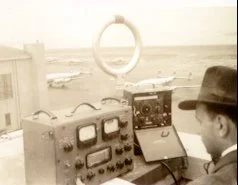From the FCC News Line:
The Federal Communications Commission announced today that it will soon ban a wide range of communications equipment due to interference that this equipment is causing to Starlink communications satellites in Low Earth Orbit (LEO). The banned equipment includes a range of legacy analog-type circuitry that, according to the Commission, has "lost relevance" and constitutes "an archaic electromagnetic nuisance." Under the proposed Commission action, banned equipment will include all regenerative, super-regenerative, and direct conversion receivers.
The interference potential of regenerative receivers has been known since the 1920s. Direct Conversion receivers were thought to be less prone to Problematic Spurious Emission (PSE), but in recent months LEO satellites have experienced serious interference from terrestrial sources.
An FCC official was nearly apoplectic when speaking about the devices that are causing this interference: "They have no shielding. They are built on wooden boards, and are made with superglue! Heck, the main tuning device is -- get this -- a screw! A screw! To think that something like that could threaten an entire LEO satellite system. This is really unacceptable." The official said that two persons in Northern Virginia had encouraged the construction of these "terrorist devices." The FCC is working with the FBI and the Department of Homeland Security to bring these people to justice.
The vast majority of the interference is believed to come from home-made ("homebrew") direct conversion receivers. These devices employ simple oscillators in the 7 MHz range. The 85th harmonic of these oscillators falls in the middle of the UHF frequencies used by the satellite system. The interference appears when the satellites are over areas known to be used by ham radio direct conversion enthusiasts. There have been communications issues near Melbourne Australia, the North Island of New Zealand, Bali Indonesia, all across the U.S. (especially in the area of Nashua, NH), Canada, the UK, Holland, and Sweden. Recently there have been reports of interference from Argentina.
A satellite company CEO of has been briefed on the matter, and promised to use his influence in the U.S. government to "squash this problem like a bug." The spokesperson for a major ham radio organization in the United States reassured members: "Don't worry, commercial SDR transceivers will not be affected by this ban."
.webp)

